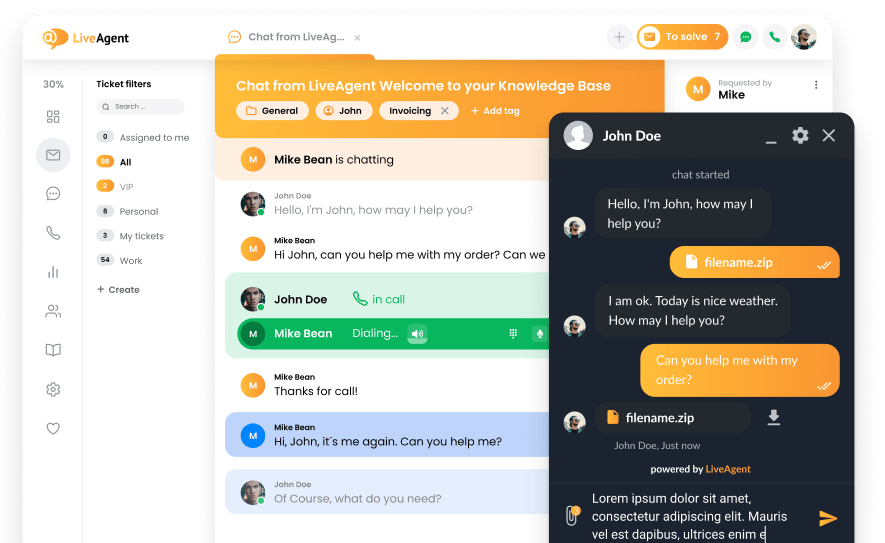In the fast-paced world of customer service, it’s easy to assume that speed is king. However, when it comes to live chat, a surprising 95% of customers prioritize comprehensive quality support over swift responses. Chat statistic like this underscores the importance of mastering live chat etiquette to provide the best customer support.
In this article, we will delve into the 12 essential live chat etiquette tips that can transform your customer service experience. We’ll explore why the art of chat etiquette is crucial, provide practical examples, and equip you with the knowledge to elevate your customer interactions. So, buckle up and prepare to revolutionize your live chat customer support!
What is live chat etiquette?
We can define live chat etiquette as a manual of how to be polite in an online conversation. The desired effect is manifested by following basic chat rules, emphasizing customer service manners, and agents’ grammar. The so-called friendly chatting is an essential part of a satisfactory customer experience, as long as the agents adhere to rules of conversation etiquette.
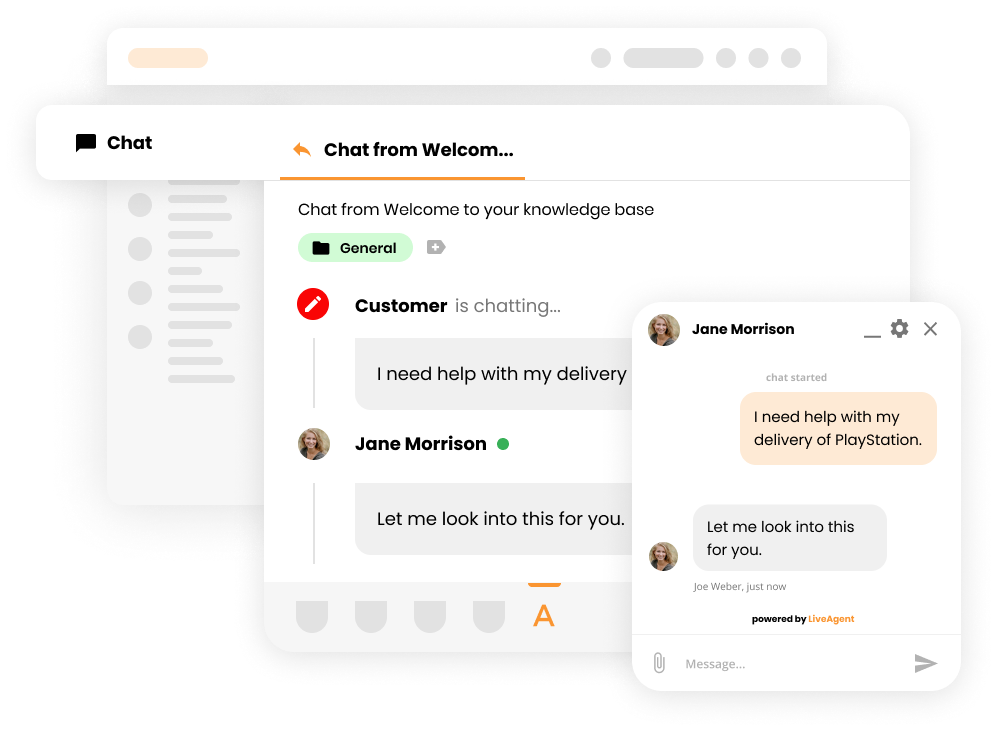
Live chat etiquette examples
Positive live chat etiquette
- “I can certainly help you with that.”
- “Let me find out for you.
- “Is there anything else I can help you with?”
- “Thank you.”
- “You are a valued customer.”
Negative live chat etiquette
- “I don’t know.”
- “I’m not sure.”
- “We never do that.”
- “Have you checked our website?”
- “It’s company policy”.
Live chat software as a communication tool is not a new technology. It has been around for decades, but it is in recent years that we have seen real growth of live chat due to technological advancements and practical use in customer support. More than half of the under 40 demographic use live chat regularly to answer basic customer support questions. Nowadays, it is considered a valuable addition to phone and email service.
Why is live chat etiquette important?
Did you know that 86% of consumers favor human interaction over chatbots? According to this statistic, it’s natural that live chat etiquette is crucial for a positive chat experience.

Here are a few reasons why live chat etiquette matters:
- Enhanced customer experience: An etiquette-compliant customer experience can lead to higher customer satisfaction.
- Increased trust: Customer respect and prompt resolution of concerns foster trust and long-term relationships.
- Improved communication: Communicating clearly and concisely helps avoid misunderstandings and ensures customers’ needs are met.
- Professionalism: Your interactions with customers reflect your professionalism. Maintaining customer service etiquette shows you value your clients.
- Increased efficiency: By following etiquette rules, such as being prompt and organized, you can increase the efficiency of your live chat service.
- Better brand reputation: Keeping good etiquette can improve your brand’s reputation, resulting in more recommendations.
12 Essential chat etiquette tips for superior customer service
After all that being said, now is the time to discuss 12 practical live chat etiquette tips you should implement in your customer service to build strong customer relationships with each chat interaction.
- Keep customer wait times to a minimum
- Emphasize correct grammar and clarity
- Craft compelling introductions
- Blend friendliness with professionalism
- Implement honesty in all aspects
- Stay focused on the customer’s issue
- Provide timely updates
- Personalize your interactions
- Implement canned messages
- Know when and how to apologize
- Conclude chats with a feedback request
- Offer additional resources or solutions
Keep customer wait times to a minimum
Keeping customer wait times as short as possible is crucial for several reasons. Firstly, it shows respect for the customer’s time. In today’s fast-paced world, time is a valuable commodity, and no one likes to feel like their time is being wasted. By minimizing wait times, businesses show that they value their customers’ time and are committed to providing efficient service.
Secondly, long wait times can lead to customer dissatisfaction and frustration. If a customer has to wait too long, they may become frustrated and their overall perception of the business may be negatively affected. This could lead to a loss of business, as the customer may choose to take their business elsewhere in the future.
Thirdly, keeping wait times to a minimum can also improve a business’s reputation. If a business is known for its quick and efficient service, it is likely to attract more customers. On the other hand, a business that is known for long wait times may deter potential customers.
Utilizing features, such as real-time typing view, can help your chat agents see customer questions even before they hit send. This can significantly decrease the response times and enhance the chat experience.
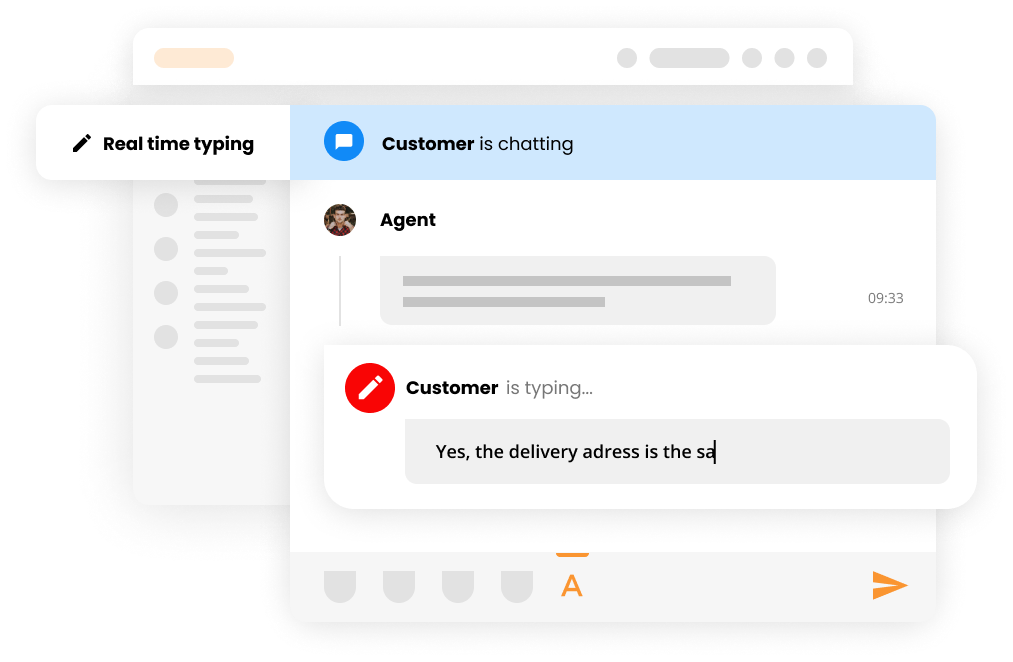
For example, consider a live chat session between a customer and a customer service representative:
| Customer: “Hello, I’m having trouble with my account. I can’t seem to log in.” Customer service representative: “Hello! I’m sorry to hear that you’re having trouble. I’ll do my best to help you. Can you please provide me with your account number?” |
In this example, the customer service representative responds promptly to the customer’s request, showing that they value the customer’s time. They also express empathy for the customer’s problem and assure them that they will do their best to help, which can help to alleviate the customer’s frustration.
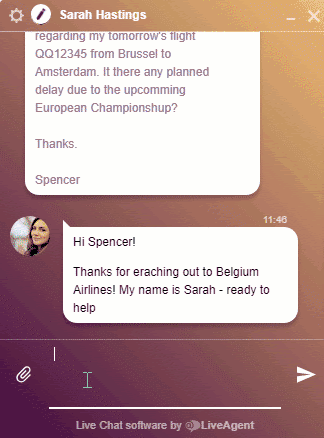
Emphasize correct grammar and clarity
This approach ensures effective communication. When grammar is used correctly, the message being conveyed is clear, reducing the chances of misunderstandings or misinterpretations. This is particularly crucial in professional settings, where miscommunication can lead to serious consequences.
Furthermore, correct grammar and clarity reflect professionalism and credibility. When you communicate with correct grammar, it shows that you are knowledgeable and competent, which can help build trust and respect with your audience. On the other hand, poor grammar can undermine your credibility, making you appear less competent or careless.
Lastly, correct grammar and clarity enhance readability. It makes your message easier to read and understand, which is particularly important in written communication.
For example, consider a live chat conversation between a customer and a customer service representative:
| Customer: “I can’t seem to log into my account. Keeps saying the password incorrect.” Representative: “I’m sorry to hear that you’re having trouble logging in. It’s possible that you might have forgotten your password. Would you like me to guide you through the steps to reset it?” |
In this example, the representative uses correct grammar and clear language to communicate effectively with the customer. The representative’s response is easy to understand, professional, and offers a solution to the customer’s problem. If the representative had used poor grammar or unclear language, it could have led to confusion and frustration for the customer.
Craft compelling introductions
Crafting compelling live chat introductions is crucial because it sets a positive tone for the entire conversation. It’s the first point of contact between the customer and the company, and it can significantly influence the customer’s perception of your company. A well-crafted introduction can make the customer feel welcomed, valued, and understood, which can lead to a more productive conversation and a higher likelihood of customer satisfaction and loyalty.
For instance, a bad live chat introduction might be something like: “Hello. How can I assist you?” This introduction is not necessarily terrible, but it’s quite generic and impersonal. It doesn’t make the customer feel special or valued, and it doesn’t give any indication that the company understands or cares about the customer’s needs or concerns.
On the other hand, a good live chat introduction might be something like: “Hello [Customer’s Name], thank you for reaching out to us! My name is [Agent’s Name], and I’m here to help you. Could you please tell me more about the issue you’re facing?” This introduction is personalized, welcoming, and empathetic. It shows the customer that the company values them as an individual and is genuinely interested in understanding and addressing their needs.
Let’s consider an example of a live chat conversation:
| Customer: “Hi, I’m having trouble with my recent order.” Bad introduction response: “Okay. What’s the problem?” Good introduction response: “Hello [Customer’s Name], I’m really sorry to hear that you’re having trouble with your recent order. My name is [Agent’s Name], and I’m here to help you resolve this issue. Could you please provide me with more details about the problem you’re experiencing?” |
In the bad introduction response, the agent sounds indifferent and uninterested, which could make the customer feel unimportant and frustrated. On the other hand, in the good introduction response, the agent expresses empathy for the customer’s situation, reassures the customer that they’re there to help, and politely asks for more information. This approach is likely to make the customer feel valued and reassured, and it sets a positive tone for the rest of the conversation.
Some customers struggle with initiating the conversation. To encourage them to seek out help if they need it, you can use proactive chat invitations. They proactively reach out to your website visitors, ensuring they receive assistance if needed, while decreasing bounce rates.
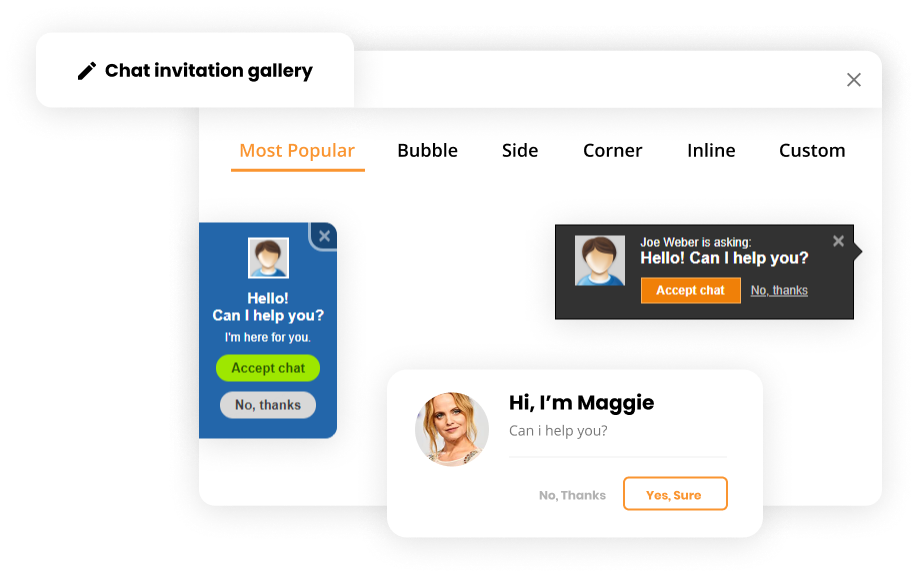
Blend friendliness with professionalism
Keeping a conversational tone while staying professional helps to establish a positive rapport with the customer. Professionalism also ensures that the conversation remains focused and productive. It ensures that the customer’s concerns are addressed efficiently and effectively, without straying into unnecessary or inappropriate topics. This not only saves time for both parties, but also ensures that the customer leaves the conversation feeling satisfied and well-served.
Moreover, a balance of friendliness and professionalism helps to humanize the company. In an era where much of customer service is automated, a friendly yet professional live chat conversation can provide a much-needed personal touch.
For example, consider the following live chat conversation:
| Customer: “Hello, I recently purchased a product from your website, and it’s not working as expected. Can you help?” Agent: “Hello! I’m sorry to hear that you’re having trouble with your purchase. I’d be happy to help you troubleshoot the issue. Could you please provide me with more details about the problem?” |
The agent maintains a friendly tone by using phrases like “Hello!” and “I’d be happy to help”. However, they also maintain professionalism by promptly addressing the customer’s concern and asking for more information to better assist them. This balance of friendliness and professionalism helps to put the customer at ease, while also ensuring that their issue is resolved in a timely and efficient manner.
Implement honesty in all aspects
Always being honest helps to build trust between the customer and the service provider. When customers feel that they are being dealt with honestly, they are more likely to trust the company and its products or services. This trust can lead to long-term customer loyalty and repeat business.
Additionally, honesty in live chat conversations ensures clear and effective communication. When both parties are honest, there is less room for misunderstandings or misinterpretations. This can lead to faster problem resolution and increased customer satisfaction.
For example, consider a live chat conversation where a customer is inquiring about the delivery status of a product they ordered:
| Customer: “Hello, I ordered a product from your website a week ago, and it still hasn’t arrived. Can you please check the status for me?” Agent: “I’m sorry to hear that your product hasn’t arrived yet. Let me check the status for you.” After a few moments… Agent: “I apologize for the delay. It appears that there was an issue with our delivery system and your product was not shipped on time. We are working to resolve this issue and your product will be shipped out tomorrow. I understand this is inconvenient, and I appreciate your patience.” |
In the example above, the chat agent was honest about the issue and did not try to make excuses or blame others. This honesty can help to maintain the customer’s trust and show that the company is committed to resolving issues and providing exceptional customer service.
Stay focused on the customer’s issue
First and foremost, staying focused on the customer’s issue shows respect for the customer’s time. It is one of the most significant practices for professional chat etiquette. Live chat is often chosen as a communication channel because of its immediacy. If the customer service representative is not focused on the issue at hand, it can lead to unnecessary delays and feelings of frustration for the customer.
This practice also demonstrates professionalism and competence. It reassures the customer that their issue is being taken seriously and that the representative is capable of resolving it. This can help to build trust and confidence in the company’s customer service.
For example, consider the following live chat conversation:
| Customer: “I’m having trouble logging into my account. I’ve tried resetting my password, but I’m still not able to log in.” Customer service agent: “I’m sorry to hear that you’re having trouble logging in. Let’s try to resolve this issue for you. Can you please tell me what error message you’re seeing when you try to log in?” |
As you can see, the chat agent is fully focused on the customer’s issue. They acknowledge the problem, express empathy, and immediately start working towards a solution. They ask a specific question related to the issue to gain a better understanding of the problem. This approach is likely to lead to a quicker resolution and a more satisfied customer.
Provide timely updates
Nobody likes to stay in the dark. Providing customers with timely updates helps to build trust and transparency between the service provider and the customer. When customers are kept in the loop about the progress of their requests or issues, they feel valued and respected. They are less likely to feel frustrated or anxious about the outcome.
Secondly, timely updates can significantly enhance customer satisfaction. When customers are promptly informed about what’s happening, they are more likely to be patient and understanding, even if the resolution of their issue takes longer than expected.
For example, consider a live chat conversation where a customer is seeking technical support for a software issue:
| Customer: “I’m having trouble installing your software on my computer. It keeps crashing during the installation process.” Agent: “I’m sorry to hear that you’re experiencing this issue. Let me look into it for you.” (After a few minutes) Agent: “I’m still investigating the issue. I appreciate your patience. I’ll update you as soon as I have more information.” (After some more time) Agent: “Thank you for waiting. It seems like the issue might be due to a compatibility problem with your operating system. I’m going to escalate this to our technical team for further investigation. They should be able to provide a solution within 24 hours. I’ll keep you updated on the progress.” |
The chat agent keeps the customer informed about the status of their request at each stage of the process. This helps to manage the customer’s expectations and maintain their trust in the service.
Personalize your interactions
Personalizing live chat interactions helps to build a stronger relationship with the customer. When you address the customer by their name and show understanding of their specific needs or problems, it makes them feel valued and appreciated. This can lead to increased customer loyalty and satisfaction.
Additionally, personalization can differentiate your service from competitors. In a world where customers often have many choices, offering a personalized service can make you stand out and give customers a reason to choose you over others.
For example, consider a live chat conversation where a customer is having trouble with a product:
| Customer: “Hi, I recently bought your blender, and it’s not working properly. The blades don’t seem to be spinning.” Agent: “Hello, I’m sorry to hear that you’re having trouble with your blender. Can I ask for your name, please?” Customer: “Sure, it’s Sarah.” Agent: “Thank you, Sarah. I’m sorry for the inconvenience you’re experiencing. Let’s see if we can figure out what’s going wrong. Can you tell me more about the issue? For instance, does the blender make any unusual noises when you try to use it?” |
In this example, the agent personalizes the interaction by using the customer’s name and by asking specific questions about her problem. This not only makes Sarah feel heard and valued, but also helps the agent to provide a more effective and efficient service.
Implement canned messages
Firstly, this practice enhances efficiency. Live chat operators often encounter similar questions or issues from different customers. Having pre-written responses for these common queries saves time, allowing the operator to assist more customers in a shorter period.
Secondly, it ensures consistency. Canned messages are pre-approved and standardized, ensuring that all customers receive the same accurate information regardless of the customer representative they interact with. This consistency helps to maintain the company’s brand voice and image.
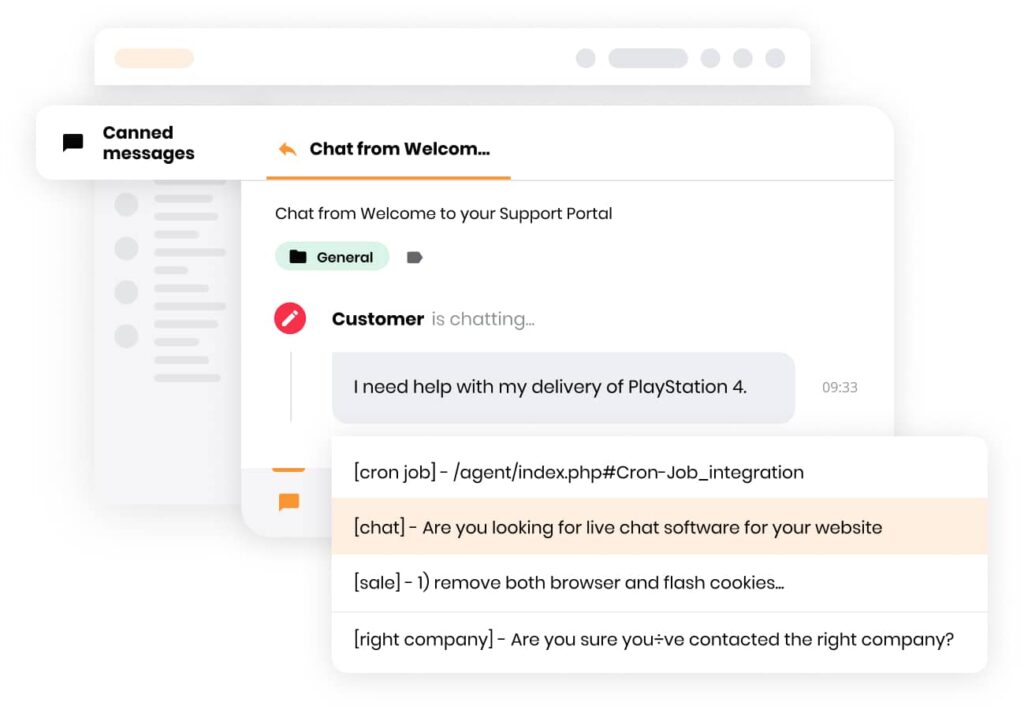
Thirdly, it reduces errors. Since canned messages are pre-written, the chances of making mistakes or typos are significantly reduced. This ensures that customers receive clear, correct information every time.
Lastly, it helps in stress management. During peak hours, agents may be overwhelmed with the volume of chats. Canned messages can help them manage their workload better, reducing stress and preventing burnout.
Here’s an example of a live chat conversation using a canned message:
| Customer: “I can’t seem to log into my account. I’ve forgotten my password.” Operator (canned response): “I’m sorry to hear that you’re having trouble logging in. You can reset your password by clicking on the ‘Forgot Password’ link on the login page. An email will be sent to you with instructions on how to create a new password. If you continue to have issues, please let me know, and I’ll be happy to assist further.” |
This canned response provides a quick, efficient, and accurate solution to a common problem, demonstrating the usefulness of canned messages in live chat conversations.
Know when and how to apologize
Admitting a mistake and apologizing helps to maintain a positive and respectful relationship between the parties involved. If a customer has a complaint or issue, a sincere apology can go a long way in defusing the situation and showing the customer that their concerns are taken seriously.
Apologizing also demonstrates professionalism. Mistakes and misunderstandings can happen in any conversation, and acknowledging them with an apology shows that you are willing to take responsibility and correct the situation.
Another important thing to note is that it can help to prevent further escalation of the issue. An apology can often be the first step in resolving a problem and moving forward.
Here’s an example of a live chat conversation:
| Customer: “I ordered a blue shirt from your website, but I received a red one instead. This is not what I ordered.” Customer service representative: “I’m really sorry for the mix-up with your order. I understand how frustrating this must be for you. Let me immediately check on this and ensure we correct the error as soon as possible.” |
As you can see, the customer service representative acknowledges the mistake, apologizes sincerely, and assures the customer that they will take immediate action to resolve the issue.
Conclude chats with a feedback request
Concluding chats with a feedback request provides an opportunity for the company to understand the customer’s perspective on the service they received. This can help identify areas of strength and weakness in the service provided, which can then be used to improve future interactions.
Asking for customer feedback also shows that their opinion is valued and that the company is committed to improving its service. This can help build trust and loyalty, which are key to maintaining a strong customer base.
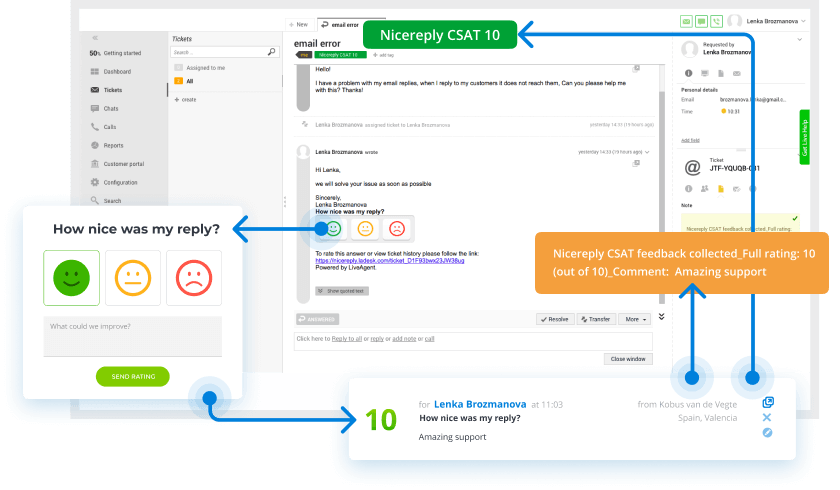
Finally, feedback can also provide insights into what customers value most in their interactions with the company. This can help guide decision-making and strategy in terms of customer service and engagement.
Here’s an example of how a feedback request might look in a live chat conversation:
| Agent: “Thank you for chatting with us today. We hope we’ve been able to assist you. Could you please take a moment to provide some feedback on your experience with our service today? Your input is very important to us and helps us to continually improve our service.” Customer: “Sure, I’d be happy to. I found the service to be very helpful, and the agent was very knowledgeable. I was able to get my issue resolved quickly. Thanks for the great service!” Agent: “Thank you for your feedback! We’re glad to hear that you had a positive experience. We’re always here to help. Have a great day!” |
Offer additional resources or solutions
When customers reach out via live chat, they are often looking for immediate assistance. By providing additional resources or solutions, you are not only addressing their immediate concerns, but also equipping them with tools to solve potential future issues. This proactive approach can significantly improve their overall customer experience.
Secondly, when you offer additional resources, it shows that you are knowledgeable and well-prepared, which can instill confidence in your customers about your ability to assist them. It also demonstrates that you are committed to helping them, which can foster a stronger relationship.
Thirdly, providing customers with additional resources can increase efficiency. By doing this, you can potentially reduce the number of times a customer needs to contact you for help. This can free up your time to assist other customers.
For example, consider a live chat conversation where a customer is having trouble installing software:
| Customer: “I’m having trouble installing your software. It keeps saying ‘installation failed’.” Agent: “I’m sorry to hear that you’re having trouble with the installation. Let’s try to resolve this. Can you tell me what operating system you’re using?” Customer: “I’m using Windows 10.” Agent: “Thank you for the information. It seems like this issue can occur if your system doesn’t meet the minimum requirements. Here’s a link to our guide on system requirements for our software (provides link). Please check if your system meets these requirements. If it does, and you’re still having trouble, here’s a step-by-step guide on how to install our software on Windows 10 (provides link). If you continue to experience issues after following these steps, please let me know, and we can explore other solutions.” |
The agent not only addresses the customer’s immediate issue but also provides additional resources that the customer can use to troubleshoot the problem on their own. This can potentially save the customer from having to contact the customer support team again, thereby improving their experience and the efficiency of the support service.
The essential qualities of a customer service support agent
A choice of proficient staff assigned to maintain the live chat communications is a crucial part of its success. There are different types of customer service, but the main point they all share is that to be positive and add to a fantastic customer experience, they should follow a specific set of rules.
It isn’t about the number of customer service agents you employ. It is about the approach that they should all possess to deliver the outstanding results of customer service. Excellent customer service is an inherent part of a superb customer experience.
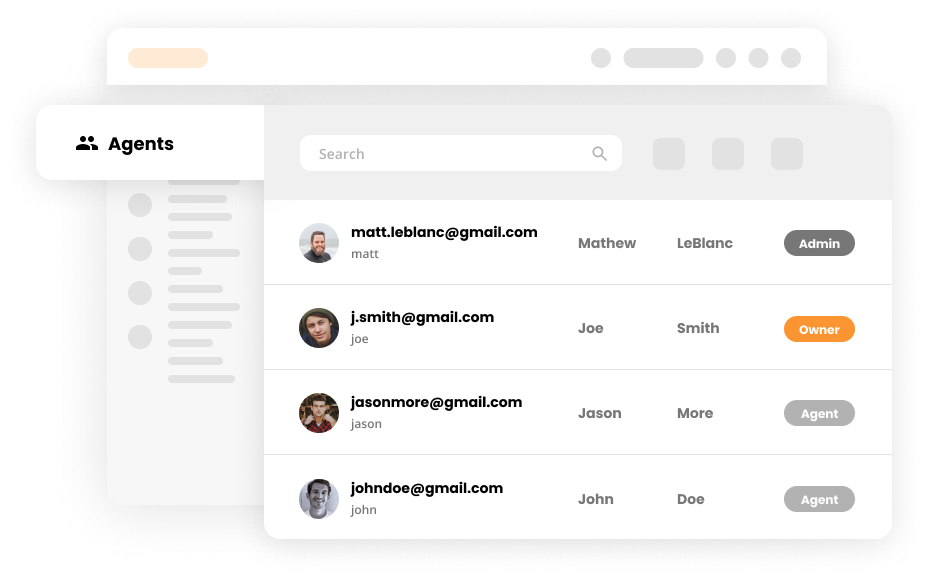
The following characteristics form the skill-set of an ideal customer service representative.
- Professional and friendly approach
- Patience
- Empathy
- Customer-centric mindset
- Knowledgeable
It is essential to produce and impose recurring customer service etiquette training to address any negative cases or refresh etiquette’s basic rules.
What to do when you don’t have an immediate solution?
Some customer issues simply can’t be resolved on the spot. When you don’t have an immediate solution in a live chat conversation, it’s important to communicate this to the customer in a polite and professional manner. You should assure them that you are working on their issue and will get back to them as soon as possible.
For example, you might say:
“Thank you for your patience. I’m currently looking into your issue and will provide a solution as soon as possible. In the meantime, is there anything else I can assist you with?”
In some cases, the issue might be too complex for a single agent or team to handle. In such situations, a chat transfer functionality comes in handy. Such a feature allows you to transfer the chat to another agent or department who might be better equipped to handle the issue.
For instance, if a customer has a technical issue full of technical jargon that you’re unable to solve, you can transfer the chat to the technical support department. You might say:
“I understand that you’re having a technical issue. I’m going to transfer this chat to our technical support department, who will be better able to assist you. Thank you for your understanding.”
Using LiveAgent’s chat transfer feature ensures that the customer’s issue is handled by the most qualified person, improving customer satisfaction and efficiency. It also allows you to learn from the solutions provided by other agents, enhancing your problem-solving skills for future chats.
How to handle negative feedback in a live chat?
Handling negative feedback in a live chat can be challenging, but it’s crucial for maintaining customer satisfaction and improving your services or products. Here’s how you can handle it:
Stay calm and professional: Regardless of the feedback, always maintain your composure. Never take the feedback personally.
- Acknowledge and apologize: Acknowledge the customer’s issue and apologize for any inconvenience caused. This shows empathy and that you value their opinion.
- Understand the problem: Ask questions to understand the problem better. This will help you provide a more accurate solution.
- Provide a solution: Once you understand the problem, provide a solution. If you can’t solve it immediately, assure the customer that you will escalate the issue to the relevant department.
- Follow up: After the chat, follow up with the customer to ensure their issue was resolved, and they are satisfied with the solution.
Example:
| Customer: “I’m really disappointed with your service. My order arrived late, and the product was damaged.” Agent: “I’m really sorry to hear about your experience. I understand how frustrating it can be when things don’t go as expected. Could you please provide more details about the damage?” Customer: “The product was scratched, and the packaging was torn.” Agent: “I apologize for the inconvenience caused. I’ll report this to our quality control team to prevent such incidents in the future. As for your current issue, we can send a replacement product or issue a refund. Which option would you prefer?” Customer: “I’d like a replacement.” Agent: “Great, I’ll arrange for a replacement to be sent out to you. Again, I apologize for the inconvenience and appreciate your patience and understanding.” |
After the chat, the agent should follow up with the customer to ensure they received the replacement and are satisfied with the service.
To help your contact center handle these difficult situations, LiveAgent offers ready-made templates that will help you navigate instances with frustrated or dissatisfied customers.
Conclusion
Mastering live chat etiquette is crucial for providing superior customer support. By implementing these 12 tips, you can enhance your customer interactions, build stronger relationships, and improve your brand’s reputation. Remember, the key to successful live chat support lies in balancing speed with comprehensive, top-notch service.
From crafting compelling introductions and personalizing your interactions to providing timely updates and handling negative feedback professionally, every aspect of your live chat communication plays a vital role in shaping the customer’s experience.
Moreover, the right live chat software can make a world of difference. LiveAgent offers a range of features designed to streamline your live chat support, including real-time typing view, chat transfer, canned responses, and much more.
In conclusion, live chat etiquette is not just about following a set of rules. It’s about creating a positive, respectful, and efficient communication environment that puts the customer first. So why not give it a try? Start your free 30-day trial with LiveAgent today and revolutionize your live chat support.
Try out LiveAgent for FREE
Handle all customer inquiries from one interface. Start improving your customer service with a 30-day free trial right away!
Frequently Asked Questions
Can you train the chatbot for the proper chat etiquette?
Yes, chatbots can be trained for proper chat etiquette. You can do this by programming them with guidelines and responses that reflect politeness, respect, and understanding. You can also continuously tweak and improve them based on user interactions and feedback.
How important are emojis and GIFs in live chats?
Because we can’t see facial expressions during a live chat conversations, emojis and GIFs play a significant role, as they help convey emotions and tone more effectively than text alone. They add personality, color, and humor to the conversation, enhancing the overall engagement. However, their importance varies depending on the context, audience, and the formality level of the conversation.
How to manage multiple live chats simultaneously?
Managing multiple live chats simultaneously can be done using advanced live chat software like LiveAgent. This chat solution’s transfer feature further aids this process, allowing you to transfer chats between agents or departments to ensure quicker and more effective responses.
How important is speed versus quality in live chat responses?
Speed and quality hold equal importance in live chat responses. Quick responses increase user engagement and satisfaction, but if the quality of responses is poor, it can lead to bad experiences and loss of potential business. You should always maintain a balance where responses are not only swift but also accurate, informative, and professionally appropriate.
The right help desk software for any startup
Boost your startup's growth with LiveAgent! Get 6 months free of multi-channel help desk software to elevate customer support & satisfaction."

 Български
Български  Čeština
Čeština  Dansk
Dansk  Deutsch
Deutsch  Eesti
Eesti  Español
Español  Français
Français  Ελληνικα
Ελληνικα  Hrvatski
Hrvatski  Italiano
Italiano  Latviešu
Latviešu  Lietuviškai
Lietuviškai  Magyar
Magyar  Nederlands
Nederlands  Norsk bokmål
Norsk bokmål  Polski
Polski  Română
Română  Русский
Русский  Slovenčina
Slovenčina  Slovenščina
Slovenščina  简体中文
简体中文  Tagalog
Tagalog  Tiếng Việt
Tiếng Việt  العربية
العربية  Português
Português 




